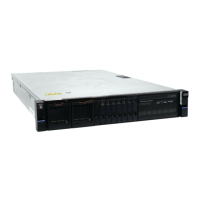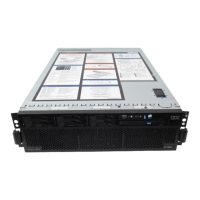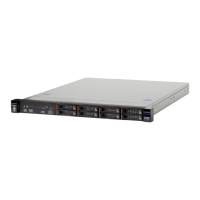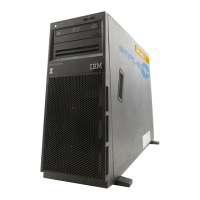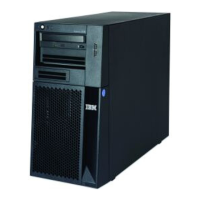Table 3. Ethernet cable standards
Ethernet port type Cable type Minimum standard Connector
1 Gbps Ethernet
technician port
TP Cat 5e RJ45
10 Gbps onboard
Ethernet ports
TP Cat 6 (up to 55 m); Cat 6a or Cat 7 (up to
100 m) at 10 Gbpsl; Cat 5e at 1 Gbps
RJ45
25 Gbps Ethernet
host interface
adapter (must be
ordered)
Optical OM3 (up to 70 m); OM4 (up to 100 m) LC
Ethernet onbard ports
Record the node canister onboard Ethernet port connections in the following table.
Table 4. Node canister onboard Ethernet port connections
Node canister 1 (upper)
Component Ethernet port 4 Ethernet port 3 Ethernet port 2 Ethernet port 1 Technician port
Switch None
Port None
Speed (10 Gbps
or 1 Gbps)
1 Gbps
Node canister 2 (lower)
Component Ethernet port 1 Ethernet port 2 Ethernet port 3 Ethernet port 4 Technician port
Switch None
Port None
Speed (10 Gbps
or 1 Gbps)
1 Gbps
Ethernet networking adapter ports
The following guidelines must be followed if 25 Gbps Ethernet adapters are installed.
• iWARP and RoCE Ethernet adapters cannot be mixed within a node canister.
Use the following table to record the node IP address that you intend to add to any port that is used for
node-to-node RDMA communication. The node IP, subnet mask, gateway, and VLAN ID are used for
node-to-node communications
Physical installation planning
Before you set up your system environment, you must verify that the prerequisite conditions for the
system are met.
About this task
This information applies to the supported hardware components. Answer the following questions before
you start the installation process.
1. Does your physical site meet the environment requirements for your system?
Chapter 1. Planning
5
